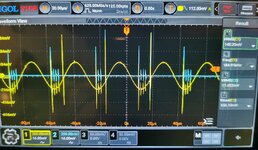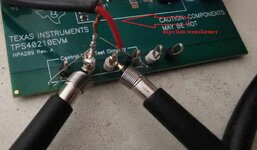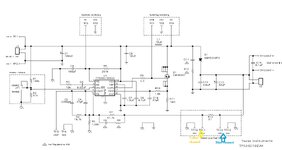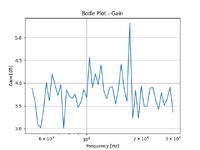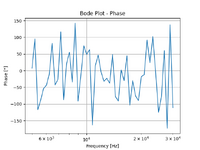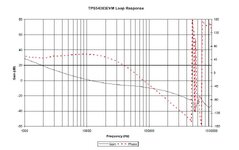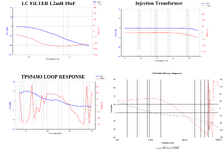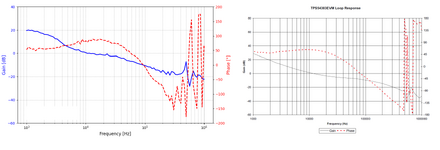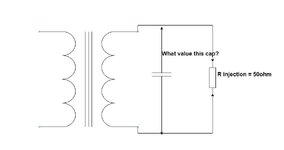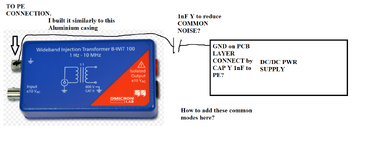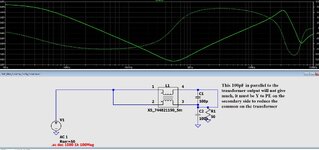Pixelx
Member level 3

Is it possible to measure the Bode characteristic of the converter using a generator and an oscilloscope? I want to determine the stability reserve of the phase and amplitude. I have a transformer injecting the DHO814 oscilloscope, an FY6900 generator, and I wrote a code in python that injects voltage into the feedback loop on a 51ohm resistor.
I have the impression that my data reading from the oscilloscope is too slow in relation to the regulation. It seems to me that if I read every 100ms, the converter will stabilize by then? Can it be done on the equipment I have?
Does the oscilloscope have to be set to the AC range? Because that's what I did
This is how I determine the gain, I don't know if it's right?
amplitude_ratio = (np.max(vout)) / (np.max(vin))
gain_db.append(20 * np.log10(amplitude_ratio))
Yellow input waveform and blue output waveform
I have the impression that my data reading from the oscilloscope is too slow in relation to the regulation. It seems to me that if I read every 100ms, the converter will stabilize by then? Can it be done on the equipment I have?
Does the oscilloscope have to be set to the AC range? Because that's what I did
This is how I determine the gain, I don't know if it's right?
amplitude_ratio = (np.max(vout)) / (np.max(vin))
gain_db.append(20 * np.log10(amplitude_ratio))
Yellow input waveform and blue output waveform
